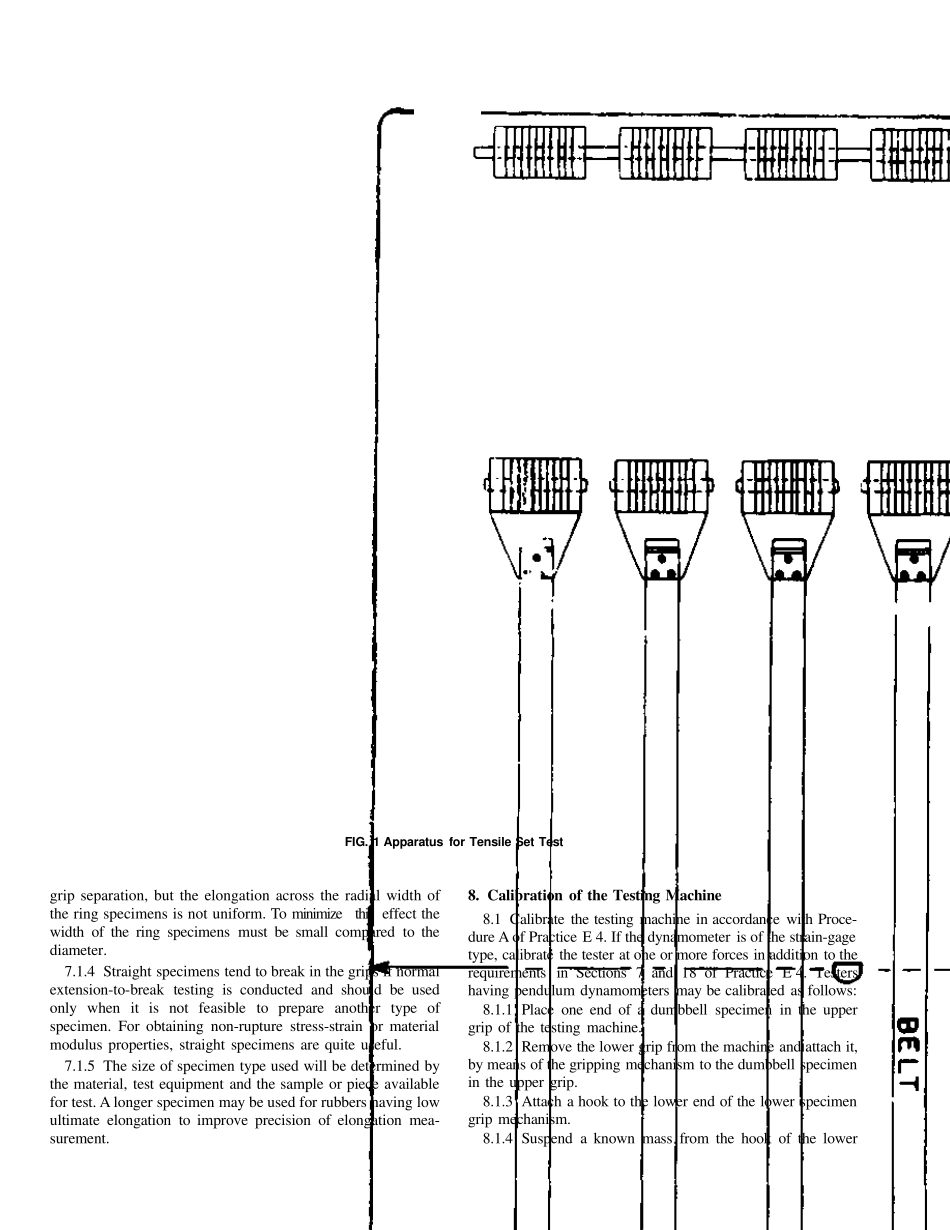Specimens may be in the shape of dumbbells, rings or straightpieces of uniform cross-sectional area.4.2 Measurements for tensile stress, tensile stress at a givenelongation, tensile strength, yield point, and ultimate elonga-tion are made on specimens that have not been prestressed.Tensile stress, yield point, and tensile strength are based on theoriginal cross-sectional area of a uniform cross-section of thespecimen.4.3 Measurement of tensile set is made after a previouslyunstressed specimen has been extended and allowed to retractby a prescribed procedure. Measurement of “set after break” isalso described.5. Signifi cance and Use5.1 All materials and products covered by these test meth-ods must withstand tensile forces for adequate performance incertain applications. These test methods allow for the measure-ment of such tensile properties. However, tensile propertiesalone may not directly relate to the total end use performanceof the product because of the wide range of potential perfor-mance requirements in actual use.5.2 Tensile properties depend both on the material and theconditions of test (extension rate, temperature, humidity, speci-men geometry, pretest conditioning, etc.); therefore materialsshould be compared only when tested under the same condi-tions.5.3 Temperature and rate of extension may have substantialeffects on tensile properties and therefore should be controlled.These effects will vary depending on the type of material beingtested.5.4 Tensile set represents residual deformation which ispartly permanent and partly recoverable after stretching andretraction. For this reason, the periods of extension andrecovery (and other conditions of test) must be controlled toobtain comparable results.6. Apparatu s6.1 Tes...


